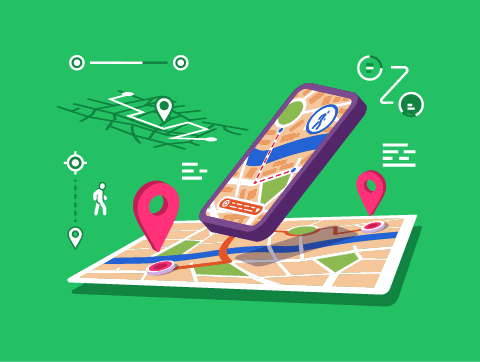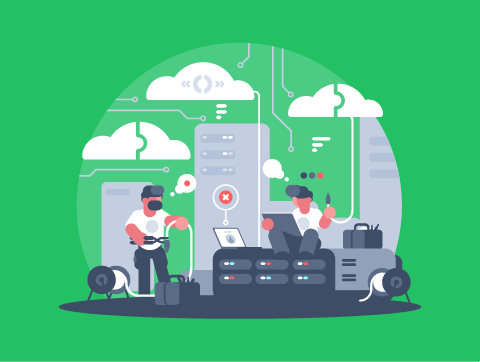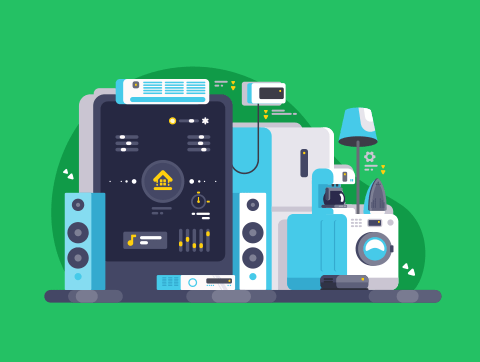Introduction
Last lesson we learnt that a digital device is a piece of physical equipment that uses digital data, such as by sending, receiving, storing or processing it.
We specifically learnt about four different types of digital devices. However, there are several more that we haven’t yet looked at.
In this lesson, we’ll learn about:
- Entertainment systems
- Digital cameras
- Navigation systems
- Communication devices & systems
- Embedded systems

What are Entertainment Systems?
Entertainment systems are computing devices designed to entertain, such as those used to watch television, listen to music, or play video games.
They usually contain good hard disk storage for storing TV, films, music & games.
They also commonly have built-in internet connectivity capabilities, such as Wi-Fi, for downloading new media directly to them, as well as to access streaming and online gaming services.
Examples of entertainment systems include digital media players, MP3 players & video game consoles.

The Purpose of Entertainment Systems
Entertainment systems cover a wide range of devices, each with its own use.
Digital Media Players
These devices allow us to stream digital media, such as films, TV, music, and images, over a network.
You may be familiar with devices like Apple TV & Roku.
Portable media players are similar, except instead of streaming, we download the media to the device and play it off the device’s hard disk.

The Purpose of Entertainment Systems
MP3 Players
These are used to access & listen to 1000s of music tracks on a small portable device.
We might also use them to listen to podcasts or other forms of auditory media.
Video Game Consoles
These devices allow you to play video games.
We can even use the internet to play games with and against other players from all around the world.

Quick Quiz: Entertainment Systems
What are Digital Cameras?
This is a device that can take photos and videos and record them as digital data.
It does this by using a grid of photosensors that convert light into digital pixels that our computer can store, usually on a memory card.
The more megapixels a camera uses to record an image, the higher the quality of the image.
Most digital cameras contain a built-in memory card slot for storing digital pictures or videos directly on the device.
As the memory card is removable, it allows you to then transfer them to another device for storage, sharing, editing or printing.
Examples of digital cameras include digital still cameras and digital video cameras.

The Purpose of Digital Cameras
One of the uses of digital cameras is to allow us to share them using a computer.
We often upload pictures and videos to our social networking profiles, like Facebook or Instagram, in order to share them with family and friends.
We might also send them to others as email attachments.
Another reason we use digital cameras is because we can edit the digital pictures & videos on our computer using photo & video editing software.
You’ve probably heard of the term ‘photoshopping’ an image, which refers to the use of a software program to remove blemishes or perform even heavier changes to a photo.

Quick Quiz: Digital Cameras
What are Navigation Systems?
Navigation systems are a digital device that uses GPS (Global Positioning System) to provide a real-time map of our current location.
They also include route planning tools to give us directions to a chosen destination.
Often, they also have added features, such as identifying traffic, roadworks and accidents that might delay your journey and take this into consideration to provide an accurate destination time.
An example of a navigation system is an in-car satnav.

The Purpose of Navigation Systems
In-car satnavs are commonly used instead of traditional maps to help direct you along the fastest route on your car journey.
This can be integrated directly into the car’s dashboard but is often in a standalone device.
TomTom is a popular brand for these devices.
Nowadays, we often see navigation systems built into smartphones for use when driving, walking, cycling, or taking public transport.
For most people, standalone satnav devices have been completely replaced by their smartphones.

Quick Quiz: Navigation Systems
What are Communication Devices & Systems?
This is a device that is used to move data between two other devices, such as two computers.
It has become almost essential for all of our computing systems to be able to communicate with each other, such as through the internet or other smaller networks.
Communication devices allow us to transmit data between devices over a network in various ways. Sometimes through wired cabling, sometimes wirelessly.
Examples of communication devices include network interface cards (NIC), wireless dongles and routers.

The Purpose of Communication Devices & Systems
Just like with data capture & collection systems, each different communication device has a unique use.
One common use throughout each device is that are all used to allow you to transmit data over a network.
However, let’s look at the unique use of each device in turn.

The Purpose of Communication Devices & Systems
Network Interface Cards
NICs allow data to be transferred to and from a networked computer by connecting an ethernet cable.
We commonly use these with desktop personal computers.
Wireless Dongles
Wireless dongles allow you to either transfer data to a router wirelessly as part of a local area network or connect to a mobile broadband network.
We commonly use these with laptops.
WiFi and even mobile broadband connectivity are often integrated directly into mobile devices like smartphones and tablets.

The Purpose of Communication Devices & Systems
Routers
A router directs data to its correct destination over a large network.
Wherever two networks meet, a router is required to direct the data in the right direction along the next network in order to reach its destination.
You probably use a router at home to allow the multiple different devices in your house to connect to the same internet connection.

Quick Quiz: Communication Devices & Systems
What are Embedded Systems?
An embedded system is a specialised computer system designed to perform dedicated tasks within a larger system.
Unlike general-purpose computers, embedded systems are often built into devices to control the devices functions.
Examples include systems in washing machines, cars, medical devices, and industrial machines.
Two key features we commonly see in embedded systems are sensors and the Internet of Things.
Let’s look at each of these features and their purpose in embedded systems.

The Purpose of Embedded Systems
Sensors
Sensors are devices that detect changes in the environment and provide corresponding outputs that can be processed by an embedded system.
Examples of types of sensors you might see used in an embedded system include temperature, proximity, motion & light sensors.
Sensors collect data that is processed by the embedded system, allowing the device to react to its environment.
For example, in a smart thermostat, temperature sensors detect room temperature, and the embedded system adjusts the heating or cooling accordingly.

The Purpose of Embedded Systems
The Internet of Things
The Internet of Things refers to the network of physical devices (things) embedded with sensors, software, and connectivity that allow them to exchange data with other devices and systems over the internet.
This enables automation, remote monitoring, and control of devices.
Embedded systems act as the “brains” of IoT devices, processing the data from sensors and sending it to other devices or cloud services for further action.
For example, in a smart home, embedded systems in devices like security cameras, lights, and thermostats communicate with each other and can be controlled remotely via a smartphone.

Quick Quiz: Embedded Systems
Lesson Summary
Entertainment systems are devices used purely for entertainment purposes, such as watching TV, listening to music, and playing games.
Digital cameras are used to take photo and video and store it as digital data.
Navigation systems are devices that use GPS to locate you on a map and plan routes to a chosen destination.
Communication devices and systems move data between two other devices, such as two computers.
An embedded system is a specialised computer designed to perform dedicated tasks within a larger device, often with real-time processing capabilities.
